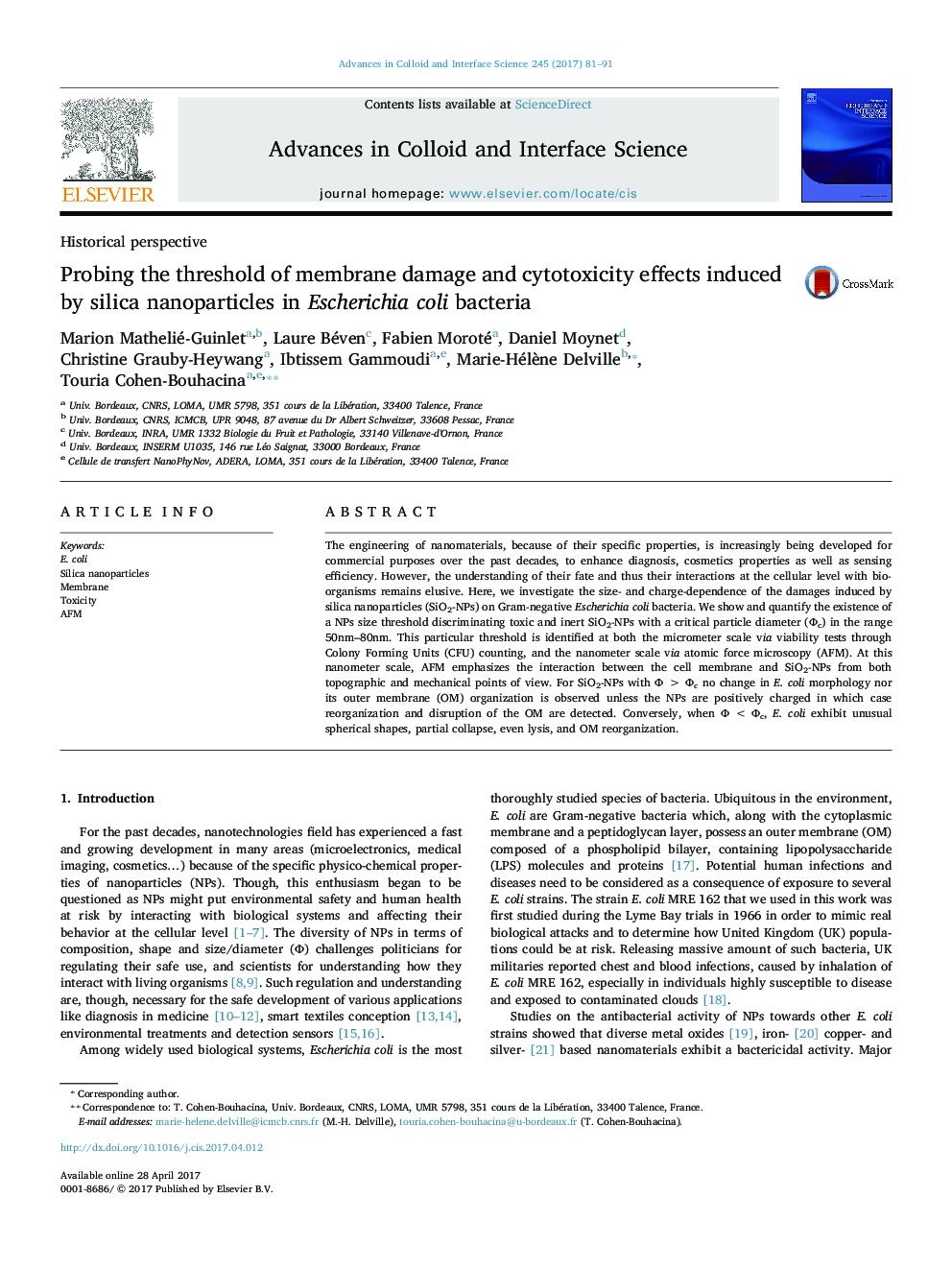| Article ID | Journal | Published Year | Pages | File Type |
|---|---|---|---|---|
| 4981437 | Advances in Colloid and Interface Science | 2017 | 11 Pages |
â¢Silica nanoparticles induce drastic membrane damage to bacteria cells.â¢Cytotoxic effects depend on a critical diameter, in the range of 50-80 nm.â¢Cationic nanoparticles are more detrimental for bacteria than anionic ones.â¢Degradations occur via the membrane penetration by small nanoparticles.
The engineering of nanomaterials, because of their specific properties, is increasingly being developed for commercial purposes over the past decades, to enhance diagnosis, cosmetics properties as well as sensing efficiency. However, the understanding of their fate and thus their interactions at the cellular level with bio-organisms remains elusive. Here, we investigate the size- and charge-dependence of the damages induced by silica nanoparticles (SiO2-NPs) on Gram-negative Escherichia coli bacteria. We show and quantify the existence of a NPs size threshold discriminating toxic and inert SiO2-NPs with a critical particle diameter (Φc) in the range 50nm-80nm. This particular threshold is identified at both the micrometer scale via viability tests through Colony Forming Units (CFU) counting, and the nanometer scale via atomic force microscopy (AFM). At this nanometer scale, AFM emphasizes the interaction between the cell membrane and SiO2-NPs from both topographic and mechanical points of view. For SiO2-NPs with Φ > Φc no change in E. coli morphology nor its outer membrane (OM) organization is observed unless the NPs are positively charged in which case reorganization and disruption of the OM are detected. Conversely, when Φ < Φc, E. coli exhibit unusual spherical shapes, partial collapse, even lysis, and OM reorganization.
Graphical abstractDownload high-res image (224KB)Download full-size image
